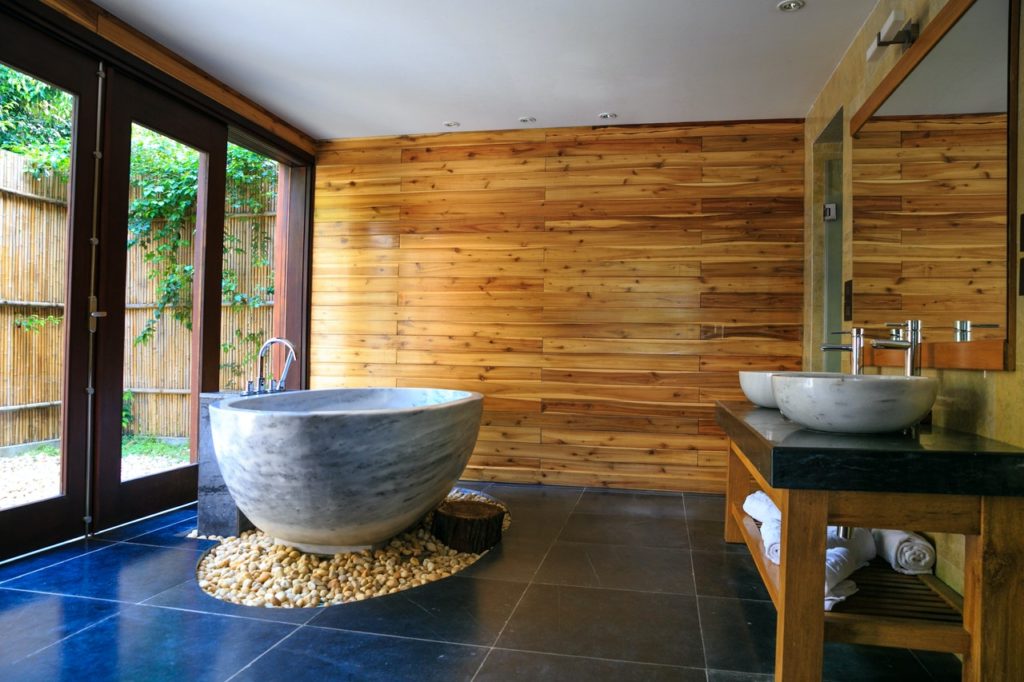I would never risk my credibility by saying, “you can use water based stains EXACTLY how you use oil based stains and achieve the same results.”
But for every “fault” voiced about water based stains, there is a pretty easy “fix.”
And here are three key ones you should know:
THE FAULT: “Water-based stains can be more difficult to use because they raise the grain of the wood.”
THE FIX: In certain cases, this is a serious issue. Depending on the type and brand of water based stain you are using, as well as the species of wood being finished, there can be a high degree of grain rise that takes place, especially with dye stains.
BUT…this grain rise effect can be controlled by following these simple steps:
1. “Move up” a step in your sandpaper grit schedule when final sanding the “white” unfinished wood prior to moving the piece into the finishing room. Meaning, if your solvent based stain schedule called for something coarse, such as 180 or 220, I recommend you move up to 320-grit to tighten the wood fibers a bit more.
2. Lightly mist the surfaces to be sanded with basic tap water (any potable, fresh water; the pH doesn’t matter). This will raise the grain – which can then be knocked down with the sandpaper of choice as discussed above.
3. Use a Pre-Stain Sealer to control both the grain rise and color blotching effect. This is a good one/two punch to bring the grain into accepting the water based media.
THE FAULT: “Water-based stains are not as durable as oil based stains.”
THE FIX: This may hold true with certain types of exterior deck and siding stains, but for interior stained surfaces that will be clear-coated with a lacquer, varnish or urethane, it’s a non-issue. If color-fastness is a concern, I recommend you select a clear top coat that has a strong UV blocking property. Well-engineered coatings with UV blockers and absorbers will control fading of dye based stains as well as slow down the sunburn effect of UV light shifting the color of the natural wood structure. That’s precisely why we blended our new Emtech® NR4000 Stain Series with UV absorbers and reflectors — so the colors remain vivid and true when exposed to UV light.
THE FAULT: “Water based stains dry too fast to produce an even finish like oil based stains.”
THE FIX: This is only half-true. Acrylic based stains are notorious for lapping and drying too quickly, preventing the finisher from leveling off the stain because it sets too quickly. However, new water based resin technology — like that engineered into our Emtech® NR4000 Stain Series — gives the modern water based stain the same open-time that is seen in VOC compliant solvent based stains.
(If you need even more open time, you can also thin Emtech® NR4000 Stain Series with with water or with Emtech® SA5 Retarder.)
Granted, it is very difficult to obtain the super-long open times we experienced with the stains made back in the mid/late 20th Century, but those formulas are no longer available, so we have to learn to adjust our procedures to the newer water based formulas.
I am confident you will find the better water based stains to be easier to use once you get to know how they work.
Speaking of which, here’s a piece of advice…
Once you commit to using the new water based stain technologies gaining in popularity, you should take the time to make sample panels to tune-up your process.
Doing this will introduce you to how these new stains work in your own shop environment and with the tools you currently work with.
It also helps to adjust your finishing hand and eye, which is a different eye then the one you use during the construction phase of the project.
What are your experiences, challenges, and pleasant surprises working with water based stains? Please share your thoughts or read what others are saying in the comments section below.


